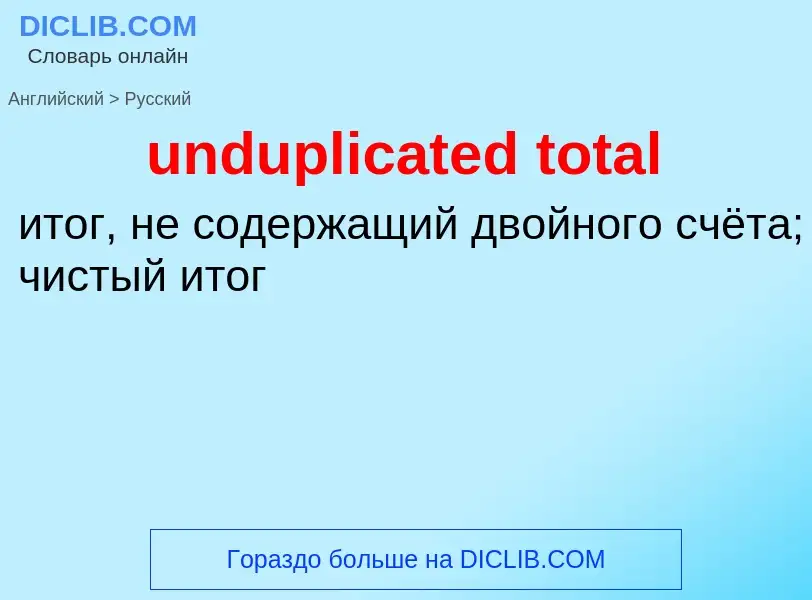Translation and analysis of words by ChatGPT artificial intelligence
On this page you can get a detailed analysis of a word or phrase, produced by the best artificial intelligence technology to date:
- how the word is used
- frequency of use
- it is used more often in oral or written speech
- word translation options
- usage examples (several phrases with translation)
- etymology
unduplicated total - translation to russian
- total after lifetime
- total of arrivals
- total of departures
- total of nutrients total
- total of taxes
- available total
- grand total
- industry total
- material total
- moving annual total
- progressive total
- raised total
- sum total
- unduplicated total
- variance total
- weighted total
['təutl]
общая лексика
целое
итог
целый
общий
абсолютный
достигать
итоговый
насчитывать
подводить итог
полный
равняться
результирующий
совокупный
составлять
сплошной
сумма
суммарный
тотальный
цельный
машиностроение
валовой
прилагательное
['təutl]
общая лексика
весь
целый
общий
совокупный
полный
абсолютный
всеобщий
тотальный
весь, целый
совокупный, суммарный
полный, абсолютный
синоним
существительное
['təutl]
общая лексика
целое
сумма
итог
целое, сумма
синоним
антоним
глагол
общая лексика
подсчитывать
подводить итог
суммировать насчитывать
составлять
достигать
равняться
подводить итог, подсчитывать
доходить до, равняться, насчитывать (о сумме, числе)
сленг
разбить
разломать
разбиться
убиться
Definition
Wikipedia
TURF analysis, an acronym for "total unduplicated reach and frequency", is a type of statistical analysis used for providing estimates of media or market potential and devising optimal communication and placement strategies given limited resources. TURF analysis identifies the number of users reached by a communication, and how often they are reached.
Although originally used by media schedulers to maximize reach and frequency of media spending across different items (print, broadcast, etc.), TURF is also now used to provide estimates of market potential. For example, if a company plans to market a new yogurt, they may consider launching ten possible flavors, but in reality, only three might be purchased in large quantities. The TURF algorithm identifies the optimal product line to maximize the total number of consumers who will purchase at least one SKU. Typically, when TURF is undertaken for optimizing a product range, the analysis only looks at the reach of the product range (ignoring the frequency component of TURF).
In order to obtain data on the items being evaluated, ratings/choices may be obtained via quantitative marketing research (such as a survey).

